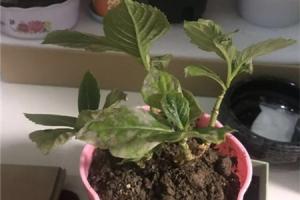Can You Just Plant Trees Anywhere?
Planting trees is an effective way to combat climate change, enhance biodiversity, and support human wellbeing. However, not all areas are suitable or legal for tree planting. Depending on various factors such as land use, soil condition, climate, and ownership, planting trees in certain places may do more harm than good. In this article, we will explore whether you can just plant trees anywhere and what considerations you should take into account.
Public Lands
Public lands, such as national parks, state forests, and wildlife refuges, are owned and managed by the government for the benefit of the public. While they might seem like ideal places to plant trees, you usually cannot do so without permission from the relevant authorities. That's because public lands have their own management plans, which are designed to protect the natural and cultural resources of the area from uncontrolled planting and potential harm. Therefore, before planting trees on public lands, you should contact the park or forest service and inquire about the requirements, permits, and recommendations. Moreover, some public lands may have specific tree planting programs that are open to volunteers or partners, which can offer you the opportunity to contribute to the local ecosystem in a more organized and impactful way.
Private Lands
Private lands, such as farms, ranches, and residential properties, are owned by individuals or entities and may offer more flexibility for tree planting. However, even on private lands, you should exercise caution and respect for the natural and social context. For example, if you want to plant trees on farmland, you should assess the soil type, drainage, and nutrient needs, as well as the potential impacts on the crops, water quality, and wildlife habitat. Similarly, if you want to plant trees in a residential area, you should consider the space, sunlight, and aesthetic values, as well as the potential conflicts with neighbors, utilities, and local regulations. In general, planting trees on private lands is easier if you have a good relationship with the landowner and can communicate your intentions clearly and transparently. You may also want to seek advice from local tree planting organizations, arborists, or natural resource agencies, who can provide technical support and guidance.
Protected Areas
Some areas are legally protected by environmental laws or international agreements, which prohibit or restrict tree planting. These areas include wetlands, coastlines, deserts, tundra, and other fragile ecosystems that are critical for biodiversity, climate regulation, or cultural heritage. In many cases, planting trees in these areas can cause irreversible damage to the existing ecosystem, disrupt the natural processes, and destroy the habitat for native species. Therefore, you should always check the legal status of the area before planning to plant trees there. You can consult the relevant authorities, such as the Environmental Protection Agency, the National Parks Service, or the United Nations Environment Programme, or search for maps and databases that show the protected areas and their regulations. By following the rules and respecting the boundaries, you can ensure that your tree planting efforts contribute to the larger environmental goals without compromising the integrity of the protected areas.
Conclusion
In conclusion, while trees can grow almost anywhere, they should be planted with care and consideration for the environment, social values, and legal requirements. Whether you are planting trees on public lands, private lands, or protected areas, you need to be aware of the potential impacts of your actions and seek advice and permission from relevant authorities and stakeholders. By doing so, you can help create a greener and healthier future for yourself and for the world.

 how many times do yo...
how many times do yo... how many planted tre...
how many planted tre... how many pine trees ...
how many pine trees ... how many pecan trees...
how many pecan trees... how many plants comp...
how many plants comp... how many plants can ...
how many plants can ... how many plants and ...
how many plants and ... how many pepper plan...
how many pepper plan...
































